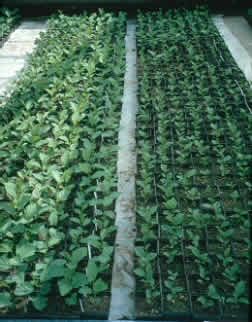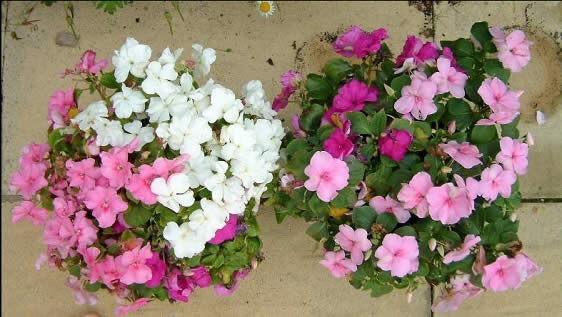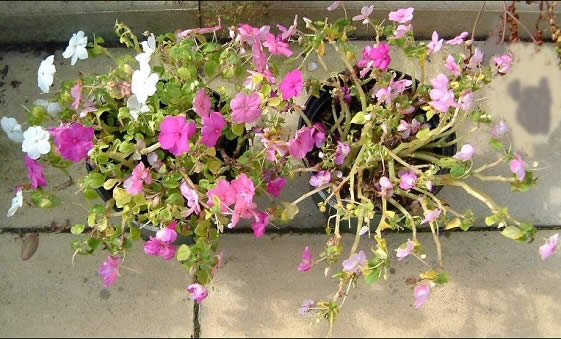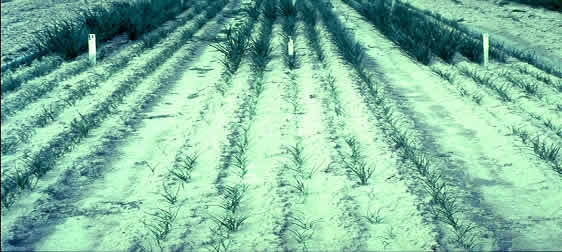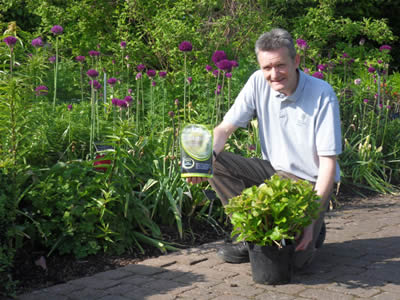Mycorrhizal Fungi
|
We know of a totally natural organism which has been around for 500 million years but has never been needed more than it is today. An organism that naturally draws the soils nutrients to your plants, helps them through drought (or you forgetting to water !) and needs only to be introduced to every plant once in its lifetime. An organism that will replenish worn out soil, save digging and make your compost and organic fertilizers work really, really efficiently. An organism that will give a new gardens and plants, including ‘bare root’ transplants a wholly organic bio active soil in weeks rather than years - without a chemical in site. An organism that will enhance the plants Rhizosphere ( it means the root zone - O.K. I know I’m showing off again ! ) over 700 times during its life, enable your plants to out compete the weeds and ensure that even the heaviest clay soil releases all its good stuff directly into your plants systems. ( Including the phosphorous and potassium so essential for strong growth and beautiful flowers - you can almost hear your roses sigh with contentment ) An organism which holds Carbon dioxide - C02 - into the soil.
Soil which, for all sorts of modern reasons, is releasing over 4 million tonnes of carbon into the atmosphere every year - and that’s just from England and Wales.
An organism of which some forms produce foods which I don’t think I could ever afford - Truffles
|
||
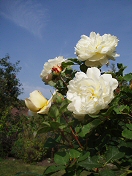
|
An organism called Mycorrhizal fungi.“Pardon” - I hear you say ! |
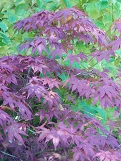
|
|
This fungi’s symbiosis with plants was working even before the dinosaurs turned up.
Mycorrhiza’s “roots” attach themselves to the plant’s root system.
The fungus then ‘swaps’ all this water and essential goodies with the plant for sugars and other stuff which the fungus really loves.
This fungus is a very sensitive little soul though. It just hates the soil it lives in being dug up too much. ( Joe’s ears went up when I said this, mind you they did when I mentioned symbiosis - he thinks it’s a rude word ! ) Not liking being tossed and turned means that mycorrhiza is often very scarce in the gardens of new houses, in soil which is regularly dug deeply, or even in ground forked over regularly.
Well, why not pour on loads of chemical fertilizer, it seems quite cheap ? Mycorrhiza, along with lots of other living, essential organisms in the natural microscopic ecosystem, will pack whatever fungi pack and move out quickly - if they still have the time ! What do you do then - more fertilizer of course, particular as most of it has now leached away.
So by trying to help growth, we really are upsetting the best natural growth aid we could possibly have. |
||
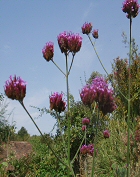
|
Where’s the Natural Cycle now ?Oh, sorry !
|
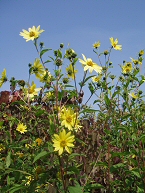
|
|
Though I will just say that mycorrhizal fungi really helps plants get the best out of organic, natural helpers. Green compost and, of course, our Neem and hand harvested Seaweed.
This mycorrhiza stuff sounds just too good to be true, I hear you say. Well aren’t you the old cynic then - just like I was. We look into things, and try them out, pretty thoroughly before even thinking of offering them for sale.
But they certainly endorse Rootgrow Mycorrhizal Fungi !It’s no wonder really, the botanists tell us that well over 95% of plants benefit from this relationship.
It’s Natures Natural Cycle - 500,000,000 years old.Anyway, I’ve gone on long enough now (shouting “Hear, Hear” is very rude ) so how about some proof. In the White Horse Wood Project in Kent, 25,000 mixed native trees were planted ! |
||
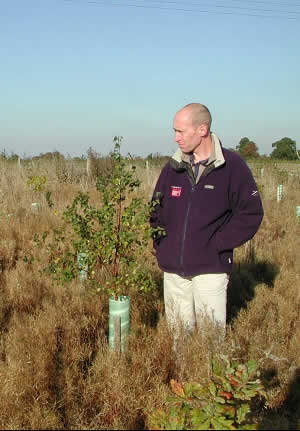
|
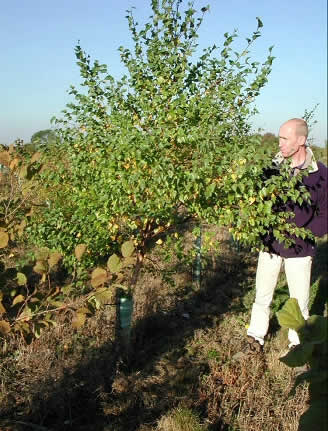
|
|
|
After three years growth the trees treated with “Rootgrow” mycorrhizal fungi were “The differences are astounding, I am convinced of the benefits mycorrhizal fungi can bring to such planting schemes.” Said Tim Owen of the Kent County Council. You can judge yourself - but by his photograph, but I don’t think he’s a man given to extravagant statements !
Three years a long time to wait for results ? Well these are some Alders after 3 months !
All right, enough with the trees.
|
||
Early in the season |
|
|
Mid Season |
|
A lot more flowers, and really nice growing shape. |
End of Season |
|
That old Mycorrhiza is still helping the plant to flower away !
|
|
How about this for an interesting picture - I find it quite creepy.
The onions in the front have been grown in sterilized soil,which certainly cleared out all of that untidy mycorrhiza.Well is ‘grown’ quite the right word - in spite of lashings of fertilizer. The onions at the back were treated with mycorrhiza.
O.K. you say, what 5% of the plants doesn’t Mycorrhizal fungus help ? Well, they’re a few, Brassicas, Azaleas, Rhododendrons and Heathers.
While for the rest it’s the most economical, most natural and most effective help you can give your plants and shrubs.
Let that old Natural Cycle keep on turning, we know that can do no harm !Just sprinkle the granules, very meanly, around the pot or planting hole into which you are planting. You just need enough to cover the roots, any more is wasted. There are full instructions on the pack, but as an idea a 360 gram pack will allow you enough to treat at least 72 half litre pots, just a level teaspoon in each.
That’s all very well I hear you cry, but how about treating plants already in the garden ?
Think of some, perhaps very small, plants that would go with it, and treat them. Then plant them around your established plant, you mycorrhiza will soon reach out to say hello.
|
For some peculiar reason sometimes PayPal ask you to 'Open an Account' if you want to pay by card, just click on this button and the card payment page will appear !
|
Colin Crosbie, RHS rootgrow endorsement. |
|
|
|
Colin Crosbie, Curator at RHS Garden Wisley, has given us the go ahead to show you his comments on Mycorrhiza – thanks Colin ! Colin said,
"At RHS Garden Wisley, we use rootgrow mycorrhizal fungi when planting trees and shrubs and we are now starting to use it when planting perennials" "It is common sense to offer a plant what it requires from nature at the very start, using rootgrow mycorrhizal fungi simply speeds up the process" "mycorrhizal fungi is probably the most important partnership a plant will have, using rootgrow when planting will kick off this essential relationship" |


